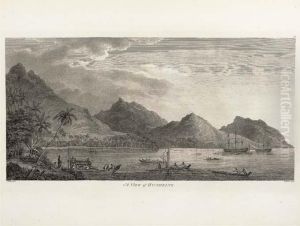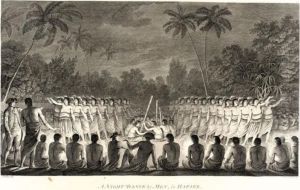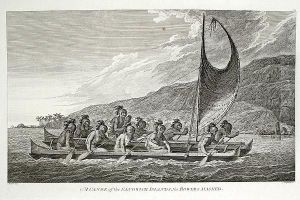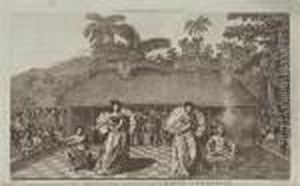Captain James Cook Paintings
Captain James Cook, although not an artist in the conventional sense, is a significant historical figure renowned for his voyages of exploration that had a profound impact on the mapping and understanding of the world during the 18th century. Born on October 27, 1728, in Marton, Yorkshire, England, Cook grew up in a farmer's family. At the age of 18, he began an apprenticeship with a merchant shipping company, which marked the start of his seafaring career.
Cook's career with the British Royal Navy began in 1755, where he quickly climbed the ranks due to his exceptional skills in navigation and cartography. His first major voyage was in 1768, when he was commissioned as a lieutenant to command the HMS Endeavour on an expedition to the Pacific Ocean. The purpose of this voyage was to observe the transit of Venus across the Sun, an event crucial for improving astronomical measurements, and to seek out the fabled southern continent, Terra Australis.
During this voyage, Cook mapped parts of New Zealand and the east coast of Australia, claiming the latter for Great Britain and naming it New South Wales. His skills in mapping were so advanced that some of his charts were used well into the 20th century. Cook undertook two more significant voyages, during which he circumnavigated the globe and made further contributions to the European knowledge of the Pacific region, including the discovery of the Hawaiian Islands, where he would eventually meet his demise.
Cook's second voyage, from 1772 to 1775, aimed to find Terra Australis, which he proved did not exist as a vast continent in the southern latitudes. His third and final voyage, from 1776 to 1779, was to find the Northwest Passage in the Arctic. During this voyage, he returned to the Hawaiian Islands, where he was killed in a confrontation with Hawaiian islanders on February 14, 1779.
Captain James Cook is remembered as one of the greatest explorers of his time. His voyages led to the detailed mapping of many areas of the Pacific previously unknown to Europeans and opened up new prospects for trade and colonization. While his interactions with indigenous peoples were sometimes controversial, his achievements in navigation, cartography, and exploration were unparalleled, and they expanded the geographical knowledge of the Western world significantly.



